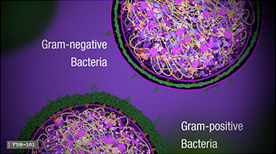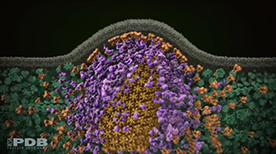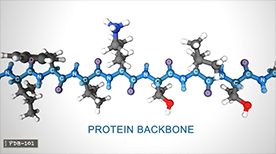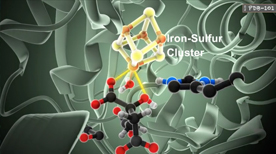Maria Voigt
Penicillin and Antibiotic Resistance | Maria Voigt

This animation provides a detailed explanation for how penicillin and penicillin-related antibiotics disrupt the bacterial life cycle, as well as the underlying molecular mechanisms by which bacteria develop resistance.
» View the animation at RCSB PDBA Molecular View of HIV Therapy | Maria Voigt

After HIV enters a T-cell, three enzymes play essential roles in the life cycle of the virus. Reverse transcriptase copies the viral RNA genome and makes a DNA copy. Integrase inserts this viral DNA into the cell’s DNA. In the last steps of the viral life cycle, HIV protease cuts HIV proteins into their functional parts. This animation from the Protein Data Bank describes the key events and molecular actors in HIV’s complex choreography.
» View the animation at RCSB PDBWhat is a Protein? | Maria Voigt

This animation from the Protein Data Bank guides us through the world of protein, which play countless roles throughout the biological world… from catalyzing chemical reactions to building the structures of all living things. Despite this wide range of functions all proteins are made out of the same twenty amino acids, but combined in different ways. The way these twenty amino acids are arranged dictates the folding of the protein into its primary, secondary, tertiary, and quaternary structure. Since protein function is based on the ability to recognize and bind to specific molecules, having the correct shape is critical for proteins to do their jobs correctly.
» View the animation at RCSB PDBHow Enzymes Work | Maria Voigt

This animation describes how enzymes maintain the rate of thousands chemical reactions within a cell necessary for its survival, such as metabolism, protein synthesis, cell renewal, and growth. In particular, we see how aconitase is an enzyme of the citric acid cycle that uses its amino acid residues to catalyze a reaction.
» View the animation at RCSB PDB



